The Value of Limits
melissa_thefarm
16 years ago
Featured Answer
Sort by:Oldest
Comments (32)
jbfoodie
16 years agolast modified: 9 years agoLindyB
16 years agolast modified: 9 years agoRelated Discussions
Help on what kind of trees these are and the value
Comments (13)Why not consult a tree expert- not necessarily a tree trimmer, but someone who maybe runs a nursery or tree company. I'm thinking that if someone spends $30,000 on landscaping the mature landscape might have been planned, and maybe there aren't really too many trees. Of course it is your house and your preferences might differ from the previous owner, I understand that, but perhaps the expert could give you different perspectives to consider....See Morecellulose or spray foam? R-value limit?
Comments (2)Is that true? no, you still have to have inches of foam that equals R-value required by code. closed cell has a higher R-value per inch than open cell. but both have to meet required R-values. talk to another contractor that is honest about his product, too much of that 'performs like R-30" you can't put in 3or 4" of foam and call it R-30 it either is or it isn't. I'd save the foam in the walls money & put foam sheathing boards on exterior, conventional insulation in walls and air tight drywall to the interior, a thermally broken stud wall with added R-value, less expensive insulation in studs & air tight to interior. I recommend foam for attic rooflines quite often. in my hot humid climate we use open cell 7" thick. fills rafter bays, covers faces of rafters, puts the equipement & ductwork we stupidly put in attic inside an unvented semi conditioned attic. tradeoff for tighter, better insulated house is lesser sized hvac system. bigger isn't better. manual j to determine size of system as opposed to 400-500 sq ft per ton sizing. best of luck....See MoreStarCraft 2015 Picks: Best Faucet Value
Comments (2)Completely meaningless. What's the best cheese burger....See MorePricing Little Beau....evaluating value of updating
Comments (58)@bry911, you just proved my point with this statement: There are some "would be" buyers who are serious and could get financing that don't have immediate access to 5% to 10% of liquidity. Lets assume you could find a home in the $77k price point here in Palm Beach county (not likely). Lets also assume that the seller accepted a financed offer over the many cash offers at that price point (also not likely). But if it were financed FHA, for example, the buyer would have to have 3.5% as a down payment plus 4% minimum of the purchase price for closing costs and pre-paid expenses. Probably more since the HOI is high here. If the buyer doesn't have access to the funds for the 5% EMD then that discussion is made at the time of the offer and the buyer has proven he doesn't have the capacity to close. Could he get gift funds? Yes, but then that discussion is known right up front too. Could the seller contribute toward his costs, only if it's agreed to in a contract, but then all the buyers cards are on the table. Same thing for VA mortgages except that the down payment is zero but the closing costs and pre-paids are similar. We don't have USDA here in PBC. The point is to not obligate the seller without also obligating the buyer. Your point is that the buyer is never obligated to follow through with the purchase right up to the day of closing and that losing $4-500 on an inspection and $500-600 on an appraisal is enough deterrent from a buyer that doesn't have the capacity or ability or desire to close. And then the seller has lost that 20 to 30 days entirely with a buyer that can't close and they knew it when they made the offer! My point is, if the buyer has no intention of actually closing, we would rather know up front before the seller signs the contract so the seller can choose not to accept an offer where the buyer doesn't have the capacity to close. All of this comes to light when we see the EMD or lack of EMD as a point of information separate from the "pre-approval". Then the seller can make a choice to go with one of the other buyers....See Moreclassytchr64
16 years agolast modified: 9 years agooath5
16 years agolast modified: 9 years agoalicia7b
16 years agolast modified: 9 years agojerijen
16 years agolast modified: 9 years agoriku
16 years agolast modified: 9 years agostefanb8
16 years agolast modified: 9 years agoingrid_vc so. CA zone 9
16 years agolast modified: 9 years agocziga
16 years agolast modified: 9 years agomendocino_rose
16 years agolast modified: 9 years agomelissa_thefarm
16 years agolast modified: 9 years agorjlinva
16 years agolast modified: 9 years agostefanb8
16 years agolast modified: 9 years agoriku
16 years agolast modified: 9 years agocarolfm
16 years agolast modified: 9 years agoalicia7b
16 years agolast modified: 9 years agoUser
16 years agolast modified: 9 years agojbcarr
16 years agolast modified: 9 years agooath5
16 years agolast modified: 9 years agorosefolly
16 years agolast modified: 9 years agogreenwitch
16 years agolast modified: 9 years agostefanb8
16 years agolast modified: 9 years agorobiniaquest
16 years agolast modified: 9 years agomelissa_thefarm
16 years agolast modified: 9 years agohoovb zone 9 sunset 23
16 years agolast modified: 9 years agoalicia7b
16 years agolast modified: 9 years agobuffington22
16 years agolast modified: 9 years agozeffyrose
16 years agolast modified: 9 years agomelissa_thefarm
16 years agolast modified: 9 years agojerome
16 years agolast modified: 9 years ago
Related Stories

MOST POPULAR5 Remodels That Make Good Resale Value Sense — and 5 That Don’t
Find out which projects offer the best return on your investment dollars
Full Story
GREEN BUILDINGInsulation Basics: Heat, R-Value and the Building Envelope
Learn how heat moves through a home and the materials that can stop it, to make sure your insulation is as effective as you think
Full Story
LIFE8 Ways to Tailor Your Home for You, Not Resale
Planning to stay put for a few years? Forget resale value and design your home for the way you live
Full Story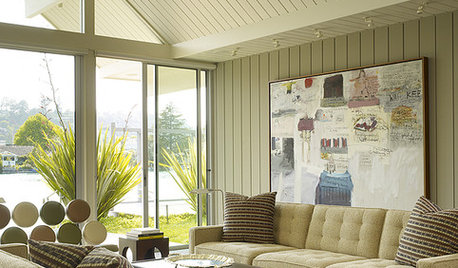
ARTCollect With Confidence: An Art-Buying Guide for Beginners
Don't let a lack of knowledge or limited funds keep you from the joy of owning art. This guide will put you on the collector's path
Full Story
LANDSCAPE DESIGNCalifornia Says Goodbye to the Sprawling Ornamental Lawn
New state rules will effectively limit turfgrass to 25 percent of the landscape in most new and renovated yards
Full Story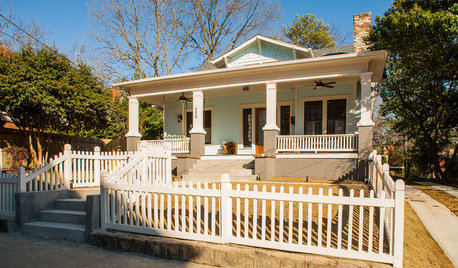
BEFORE AND AFTERSHouzz Tour: New Life for a Historic Georgia Fixer-Upper
Renovation restrictions didn't limit a couple's enthusiasm for this well-sited Decatur home
Full Story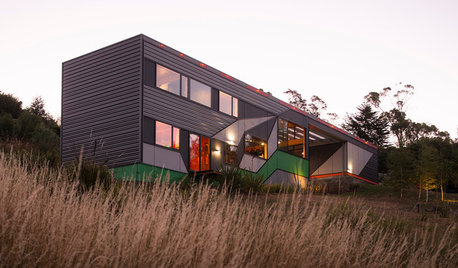
THE ART OF ARCHITECTUREThe Architects Who Asked ‘What If?’
In designing their own homes, these Australian architects turned self-imposed limits into creative discoveries
Full Story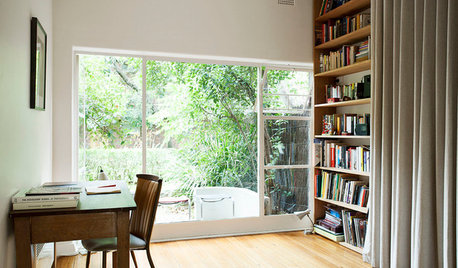
SMALL SPACESHouzz Tour: A Shape-Shifting Space, Cloaked in History
An architecturally significant Melbourne apartment makes the most of its limited square footage
Full Story
HOME TECHOpen Workspaces Let You Watch Over Kids' Online Time
Keep your children safe while they're surfing the Internet with desks and computers in accessible areas of the home
Full StorySponsored



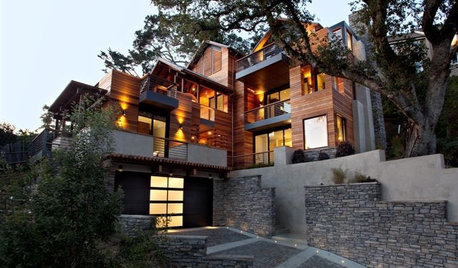



iowa_jade